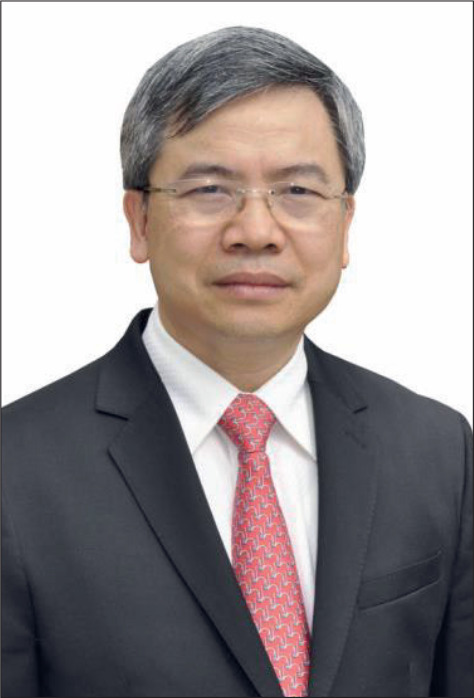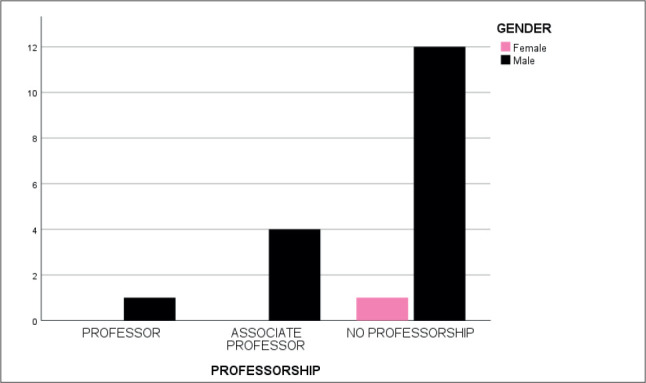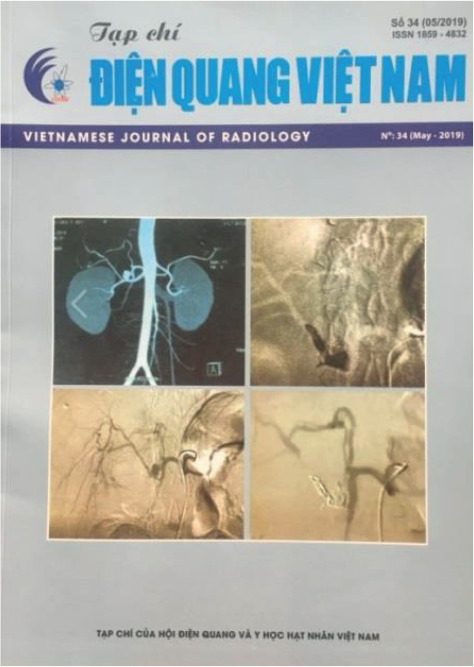Abstract
Introduction:
The Vietnamese Society of Interventional Radiology (VSIR) is one of the world’s youngest interventional radiology (IR) societies, with more than 150 members. During the first decade of the development phase, in addition to a number of achievements, the VSIR has continued to address problematic circumstances.
Aim:
This article aims to describe the current status of VSIR, to introduce VSIR to other IR societies.
Methods:
We investigated VSIR, using internet sources and related academic and clinical papers.
Results:
VSIR was founded in 2010 and has succeeded in advancing education and scientific research during the last 10 years.
Conclusion:
VSIR is widely involved and accepted in Vietnamese medicine. We recommend the launch of an IR training program and support a unified global IR platform, for the benefit of both clinicians and patients in the near future.
Keywords: Vietnamese Society of Interventional Radiology, Development, Achievement
1. INTRODUCTION
Interventional radiology (IR), which differs from diagnostic radiology, internal medicine, and traditional surgery, represents a clinical specialty that offers minimally invasive diagnoses and treatments for numerous diseases, under the guidance of imaging modalities, such as X-ray, ultrasonography, computed tomography, and magnetic resonance imaging (1).
Most IR procedures related to vascular and nonvascular interventional therapy are performed by diagnostic radiologists or clinical doctors. IR therapies provide both clinicians and patients with alternative treatment options that are associated with low rates of adverse events and faster recovery times than traditional surgical procedures. Since the establishment of IR in the 1960s, millions of patients have been cured by practitioners in this field. The establishment of IR enhanced social collaborations and labor resources; therefore, IR has become the most promising minimally invasive therapy option, in both Vietnam and worldwide, which has attracted many radiologists and medical residents to this new field (1, 2).
In July 2010, the Vietnamese Society of Interventional Radiology (VSIR) was established by Professor Pham Minh Thong. During the past 10 years, VSIR has expanded from a small club with fewer than 30 members to an important medical society with over 150 members (3, 4). Although some people have said, “Let’s forget the past and focus on the future,” more people believe that the future is constructed on the past that there can be no future without the past. Unfortunately, only a few current VSIR members remember the founding and early years of VSIR. We believe that a historical review examining VSIR will not only improve the knowledge of future Vietnamese IR practitioners but will also increase the visibility of VSIR for other IR societies.
2. AIM
In this review, we aimed to examine the founding and the future of VSIR.
3. FINDINGS
3.1. Membership and Conferences
VSIR is a nonprofit, professional medical society, which welcomes the participation of medical students, interventional radiologists, researchers, physician assistants, nurse practitioners, radiologic technologists, and diagnostic radiologists, from both private and public healthcare systems. The primary mission of VSIR is to improve the knowledge and workflow of interventional physicians, to obtain better clinical outcomes for patients. Furthermore, VSIR cooperates with various companies and manufacturers of material and equipment related to interventional therapies, to provide and immediately updated information regarding novel technologies and new products for its members (4).
Currently, 18 members (17 males and 1 female) constitute the VSIR faculty, including four standing committee board members: Professor Pham Minh Thong (president, Figure 1); Associate Professor Le Van Truong and Dr. Tran Chi Cuong (vice-presidents); and Associate Professor Vu Dang Luu (general secretary). VSIR continues to face issues such as gender disparity, with a low percentage of female members (5.6%), and a low proportion of professors among its membership (5.6%) (Figure 2).
Figure 1. Professor Pham Minh Thong, the current president of the Vietnamese Society of Interventional Radiology.

Figure 2. Bar chart showing professorship among the VSIR members, according to gender distribution.

VSIR regularly holds annual scientific conferences in key Vietnamese regions, including Hanoi, Hue, Ninh Binh, and Da Nang. The mission of these conferences is to stimulate both the domestic and international exchange of clinical information among members, to help all radiologists using the same scientific platforms and to enhance the clinical practice of IR. In 2020, the 8th congress of VSIR will be held in Ninh Binh City, attended by both Vietnamese IR experts and those from other countries, including the French IR experts from Groupe des Radiologistes Enseignants d’Expression Francaise (GREF) who are presenting the keynote lectures, with the aim of sharing knowledge applicable to the IR field. VSIR is a current membership society of the Asia Pacific Society of Cardiovascular and Interventional Radiology (APSCVIR) and has a very deep relationship with the Korean Society of Interventional Radiology.
3.2. Human Resources and Education
The medical education specialty programs in Vietnam include Oriented Specialty (9-12 months), Residency Doctor (3 years), Specialist I (2 years), Specialist II (2 years), Master’s Degree (2 years), and Doctor of Philosophy (PhD, 3 years). In addition, 2 levels of professorship can be attained, including associate professor and full professor. To become a radiological technologist, some medical colleges in Hanoi, Hai Duong, Hue, Da Nang, and Ho Chi Minh City offer dedicated training programs. The numbers of both interventional radiologists and radiographers are currently critically insufficient to support a national population of nearly 100 million people. Furthermore, current training procedures are not well-standardized. At medical universities, IR is only referenced during a single 45–60-minute basic lesson, during a diagnostic radiology course for 4th-year medical students. During Specialist I, Specialist II, Master’s Degree, PhD and residency training, medical universities offer independent IR courses; however, these are elective and not mandatory. In addition, IR residency training programs remain unavailable in Vietnam. Thus, after completing a residency course for diagnostic radiology, candidates who are interested in following the IR career path must join IR teams at public hospitals to learn how to practice IR. One of the major limitations for interventionists who aim to improve patient management skills is the time spent on diagnostic radiology subjects. In addition, no unified training program for IR exists across the different regions of Vietnam, and no national qualification examination for interventional clinicians has been established; thus, no official criteria have been utilized to assess the abilities of IR practitioners in Vietnam.
3.3. Research and Publications
In Vietnam, IR research results are primarily published in the Vietnamese Journal of Radiology (Figure 3), the official journal of the Vietnamese Society of Radiology and Nuclear Medicine, for which all articles were published in Vietnamese prior to 2019. Currently, the Vietnamese Journal of Radiology publishes four issues each year, 1 in English and 3 in Vietnamese. However, the Vietnamese Journal of Radiology relies on paper printing and does not participate in DOI registration; therefore, this journal only serves offline domestic readers (3). Starting in 2019, some IR teams publishing their papers in Scopus-indexing journals, to improve their reputations and increase their chances of achieving professorship. Unfortunately, the rate of international publications is relatively low, due to the limitation of English as the preferred academic language. We have observed that the IR teams in northern Vietnamese regions have more international publications than those in southern regions. On 15 Jan 2017, Professor Pham Minh Thong and his team became the first IR team to earn the Ho Chi Minh prize in science and technology, one of the most prestigious national awards, with the project “Utilization of advanced vascular interventional radiology in the diagnosis and treatment of some neurovascular diseases” (5), which represents a good motivator for other IR teams performing clinical studies related to this field.
Figure 3. The Veitnamese Journal of Radiology of Radiology.

3.4. Future Directions
During the first decade of the development phase, in addition to achievements, the VSIR continued to face challenges that must be overcome, including, but not limited to, the following: (1) clarifying the relationships between IR and related disciplines, such that no discipline is viewed as being superior to the others; (2) developing guidelines for the first-line IR treatments of certain diseases; (3) enhancing basic and clinical research related to IR; (4) developing a national training program, based on the agreements between VSIR and medical universities; (5) enforcing the criteria of IR systems and the examination of IR as a separate discipline from diagnostic radiology; (6) cooperating with material and equipment companies to perform research and develop novel devices, tools, methods, and techniques; (7) broadening IR indications for patient treatment; (8) improving inpatient and outpatient care procedures; and (9) assessing the impacts of IR on healthcare management and policies.
4. DISCUSSION
IR was established on January 16, 1964, when Sir Charles Dotter triumphantly treated a woman suffering from superficial femoral artery stenosis using percutaneous transluminal angioplasty. All interventional radiologists recognize Charles Dotter to be the father of modern IR (6). Officially, the term “interventional radiology” was coined by Alexander Margulis, in his editorial commentary, published in 1967 in the American Journal of Roentgenology (7).
In 1973, the Society of Cardiovascular Radiology was established in the US, which was renamed the Society of Cardiovascular and Interventional Radiology in 1983 before becoming the Society of Interventional Radiology (SIR) in 2002, which currently has approximately 8,000 members (8). The official journal of SIR is the Journal of Vascular and Interventional Radiology, which has been published consecutively since 1990 (9).
In Europe, two IR societies were first formed: the European College of Angiography and the European Society of Cardiovascular and Interventional Radiology. In 1985, during a joint Annual Meeting and postgraduate course in Vienna, these two societies officially merged to become the Cardiovascular and Interventional Radiological Society of Europe (CIRSE) (10). The new society currently has approximately 8,000 members. CardioVascular and Interventional Radiology (CVIR), the longest-running journal in the IR field and founded in 1978, is the official journal of CIRSE (11).
In 1991, APSCVIR was founded by a group of interventional radiologists in Singapore, Japan, Korea, and Australia. In 2016, member societies included those in Australasia, China, Hong Kong, India, Indonesia, Japan, Republic of Korea, Malaysia, Mongolia, Myanmar, Pakistan, Philippines, Singapore, Taiwan, Thailand, and Vietnam (12).
In 1995, 20 years after the end of the war between Vietnam and the US in 1975 (3), US President William J. Clinton declared the “normalization of relations” with Vietnam, offering the chance for Vietnam to improve with regards to economics and medicine (13). After 2000, the two largest Vietnamese hospitals, Bach Mai and Cho Ray Hospitals, installed digital subtraction angiography systems, which are currently available in many public and private Vietnamese hospitals. IR teams consisting of interventional radiologists and radiographers become necessary, and the IR teams at these hospitals shared a common desire to update their knowledge related to IR workflow and to interact with both domestic and international experts to improve patient care. With the acknowledgment of medical society and the increased development of the IR field, the founding of the VSIR became necessary. Several generations of Vietnamese IR practitioners have made efforts to alter the relationships between IR and similar disciplines, by establishing independent IR departments, developing abundant procedures to facilitate cooperation with other specialties, and boosting the potential for scientific investigation (14, 15). These endeavors have generated more opportunities for Vietnamese IR practitioners to become more competent and disciplined.
5. CONCLUSION
VSIR has achieved great progress in education and scientific research. IR is widely accepted and practiced in Vietnamese medicine. We recommend that an IR special training program and discipline should be launched soon, backed by scientific research. Finally, a global IR platform will generate opportunities for beneficial effects for both clinicians and patients in the future.
Acknowledgment:
The authors are grateful to Vietnamese society of interventional radiology owing to their general support and technical help.
Ethical approval and Declaration of patient consent:
Not applicable.
Author’s contribution:
Each author gave substantial contribution in acquisition, analysis and data interpretation. Each author had a part in preparing article for drafting and revising it critically for important intellectual content. Each author gave final approval of the version to be published and agreed to be accountable for all aspects of the work in ensuring that questions related to the accuracy or integrity of any part of the work are appropriately investigated and resolved.
Conflicts of interest:
There are no conflicts of interest to declare.
Financial support and sponsorship:
Nil.
REFERENCES
- 1.Kaufman JA, Reekers JA, Burnes JP, Al-Kutoubi A, Lewis CA, Hardy BW, et al. Global statement defining interventional radiology. J Vasc Interv Radiol. 2010;21:1147–1149. doi: 10.1016/j.jvir.2010.05.006. [DOI] [PubMed] [Google Scholar]
- 2.Zhao H, Tsauo JW, Zhang XW, Li X. Interventional Radiology in China: Current Status and Future Prospects. Chinese medical journal. 2017;130(11):1371–1375. doi: 10.4103/0366-6999.206355. [DOI] [PMC free article] [PubMed] [Google Scholar]
- 3.Duc NM, Huy HQ, Thong PM. Vietnamese Society of Radiology and Nuclear Medicine: Past, Current and Future. Acta Inform Med. 2019;27(5):374–379. doi: 10.5455/aim.2019.27.374-379. [DOI] [PMC free article] [PubMed] [Google Scholar]
- 4.Vietnamese society of interventional radiology [Internet] 2020. [03 Jan 2020]. Available via https://vsir.vn/
- 5.Nine projects achieved Hochiminh prize in science and technology field [Internet] 2020. [03 Jan 2020]. Available via http://hdgsnn.gov.vn/tin-tuc/9-cong-trinh-duoc-trao-giai-thuong-ho-chi-minh_369.
- 6.Payne MM. Charles Theodore Dotter: The father of intervention. Texas Heart Institute journal. 2001;28(1):28–38. [PMC free article] [PubMed] [Google Scholar]
- 7.Margulis RA. Interventional diagnostic radiology–a new subspecialty. AJR Am J Roentgenol. 1967;99:763–765. [Google Scholar]
- 8.Society of Interventional radiology [Internet] 2020. [03 Jan 2020]. Available via https://www.sirweb.org/about-sir/
- 9.Journal of Vascular and Interventional Radiology [Internet] 2020. [03 Jan 2020]. Available via https://www.jvir.org/
- 10.Cardiovascular and Interventional Radiological Society of Europe [Internet] 2020. [03 Jan 2020]. Available via https://www.cirse.org/30years/
- 11.CardioVascular and Interventional Radiology [Internet] 2020. [03 Jan 2020]. Available via https://www.cvironline.org/
- 12.Asia Pacific Society of Cardiovascular and Interventional Radiology [Internet] 2020. [03 Jan 2020]. Available via http://apscvir.com/
- 13.Chronology of U.S. – Vietnam Relations [Internet] 2020. [03 Jan 2020]. Available via https://vn.usembassy.gov/our-relationship/policy-history/chronology-of-us-vietnam-relations/
- 14.Duc NM, Huy HQ, Keserci B, Thong PM. Gender Disparity in Vietnamese Radiological Societies: a Preliminary Observational Study. Acta Inform Med. 2020;28(1):71–74. doi: 10.5455/aim.2020.28.71-74. [DOI] [PMC free article] [PubMed] [Google Scholar]
- 15.Duc NM, Huy HQ, Keserci B, Thong PM. A Preliminary Vietnamese Comparative Study of Postgraduate Radiological Thesis Characteristics. Med Arch. 2020;74(1):42–46. doi: 10.5455/medarh.2020.74.42-46. [DOI] [PMC free article] [PubMed] [Google Scholar]


